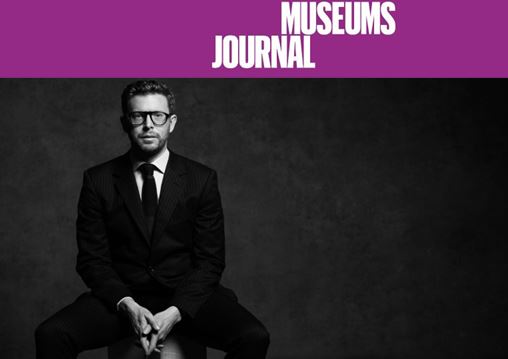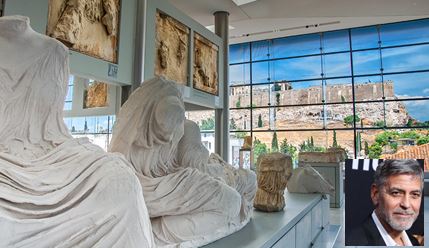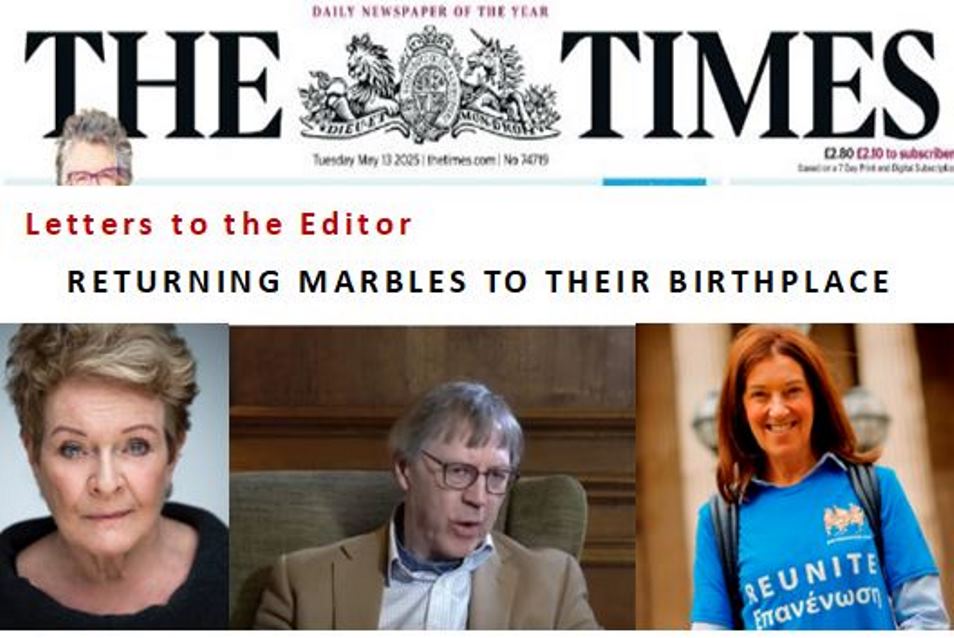February 19, 2008 Cambridge Union Elgin Marbles debate results
The Cambridge Union yesterday (Monday February 18, 2008) held a much publicised debate on the subject: This House would return the Parthenon Marbles to the New Acropolis Museum in Athens. The results were as follows:
In favour: 117
Against: 46
This is a fairly conclusive result, improving on that of the Oxford Union debate in 2004 where the outcome was 133 for & 75 against.
And below the presentation made to the assembled by the then Chairman of the British Committee for the Reunification of the Parthenon Marbles, Professor Anthony Snodgrass.
Mr. President:
This is an issue with which I have been concerned for twenty years and there is one general truth that I have learned in that time: the more people know of the facts of the case, the more likely they are to support the return of the London Marbles to Athens, and their reunification with the other half of the surviving sculptures from the Parthenon which are already there. From this, you will rightly infer that some of the arguments against reunification are based on gaps in knowledge or even factual falsehood. So let’s start with what all can agree on, and what some people will already know of the issue. In the years between 1800 and 1803 Thomas Bruce, 7th Earl of Elgin, sent his agents from Constantinople (where he was British Ambassador) to Athens, where he later visited them. Here they acquired what they could of the sculptures belonging to the temple called the Parthenon. Some of these lay already on the ground below the temple, but the great majority were attached, indeed built into, the Parthenon and they had to be detached from it by methods which I shall not describe. Another large group were inaccessible to Elgin, either because they were too deeply embedded in the architecture, or because they were buried in the ground, to be discovered only thirty years later by the newly independent Greeks. Elgin then arranged, at enormous cost and over years of effort, for the sculptures to be transported to London: the cost was so great that he soon found no alternative but to sell them on to the nation, through Parliament, in 1816. So far, so uncontroversial, I hope.
Looking at the quality of the speakers lined up for the opposition, I have hopes that none of misinformation I referred to earlier will be served up again tonight, as it regularly is in half-informed newspaper articles and letters to editors. But just in case, Mr. President, may I give you advance warning of a couple of such arguments ? On the positive side, the so-called ‘Elgin Marbles’ are not (as their presentation in the British Museum might suggest to the casual viewer) all that survives of the sculptures of the Parthenon: they are about half of what survives, and there are many places where reliefs, statues or individual figures among them have actual joins between pieces in London and pieces in Athens.
Then, on the negative side, if any speaker tells you that Lord Elgin “bought and paid for” the Marbles, please, Mr. President, do not believe them. If I go into a Bond Street jewellers where a million-pound diamond is exhibited in the window, and say to the shop assistant “Look, I’d very much like that diamond; I know your boss very well and he wouldn’t mind my taking it, but anyway here’s fifty thousand pounds in cash for you, if you’ll look the other way while I just take it”, then I may end up with the diamond but no one can possibly say that I have bought it. Yet that is essentially what Lord Elgin did, with the underpaid Ottoman officials in Athens. Only with them did money or gifts in kind change hands; when Elgin returned to his Embassy in Constantinople, the actual ‘owners’ of the monument, the Ottoman Sultan and his government, received not a penny. The fact that Elgin then bankrupted himself with the cost of transporting the Marbles home is irrelevant to questions of purchase.
Central players in this dispute today are of course the Trustees and Director of the British Museum, to whom the British Government has now passed over all responsibility for handling the issue. What they have given us over the past twenty years has been a sort of Dance of the Seven Veils, in which a whole series of transparent arguments has been tried and jettisoned, one after another, as each one’s inadequacy has been revealed. To be fair, the “bought and paid for” allegation that I just described is not one of these: perhaps the Museum appreciates that, even if it were true, it would be less than clinching as an argument. But we have seen at least seven other veils coming off.
First was the claim “It would be a different matter if the Marbles could go back on the building, the Parthenon, from which they came”: this veil is too transparent to stand up to any wear at all since, for over a century, from the time of the Greek Government’s first known request for the return of the Marbles in 1835, until the 1950s when air pollution became a serious problem in Athens, it was indeed a feasible proposition to replace them on the building. For all that time, it was not “a different matter” at all: it made not a jot of difference.
Next, that well-worn garment: “Lord Elgin saved his sculptures from probable or (if you prefer) certain destruction”. This is what is known as a counter-factual hypothesis, about what would have happened if… The answer in this case is very easy: go to Athens and see the sculptures he did not take - especially the slabs of the Parthenon’s West Frieze, which the Greeks took down from the building in 1993, conserved over eleven years by state-of-the-art methods, and put on public exhibition in 2004. It is a matter of opinion whether their condition is better or worse than that of their counterparts in London; but what no one can say is that they have suffered “destruction”.
Next, “The poor Greeks have nowhere to exhibit them properly”. This one fell to the ground in the autumn of 2007 when work on the New Acropolis Museum in Athens was completed. The Parthenon Gallery on its top floor, in terms of its lighting, of its proportions which exactly match those of the Parthenon, of its location in clear view of the Parthenon and of the design of its display with the sculptures facing outwards (as they did on the Parthenon) instead of inwards, is light years ahead of that tomb-like space in Bloomsbury.
Distinct from the previous veil is the next: “The poor Greeks wouldn’t be able to look after them properly, as we have over two centuries of stewardship”. Here there is an embarrassing exception to be made: “… apart from the unfortunate events of the cleaning in 1937-38”. I had hoped to see on the opposing bench the distinguished figure of the previous Director of the British Museum who in 1999, to his enormous credit, initiated a Conference to investigate what exactly had happened to the London Marbles in 1937: a salutary step, since in the first sixty years after the event, very little indeed had leaked out. Maybe he would have told you more about that episode; and then again, maybe not. I will content myself with quoting some words from one of his own Assistant Keepers, in summing up his speech to the 1999 conference: “What happened then was a scandal, and the cover-up was another scandal”.
Next comes this one: “More people see them here than would ever see them in Athens”. This time we have a veil which, though for a long time serviceable, is now threadbare. True, the British Museum claims some six million (or at times a more modest five million) visitors in a year. The trouble is that most of these visitors never go to the Duveen Gallery where the Marbles are housed. This has been proved several times over, most comprehensively by the MORI poll in September 2002. The proportion, at any rate of British visitors, came out at rather less than a quarter viewing the sculptures. The resultant tally is some one-and-a-quarter million, and it was already exceeded by those visiting the Acropolis in Athens, even before the building of the New Museum. It also tells us something about the relative attachment of the two peoples to the Parthenon sculptures.
Two more substantial veils or cloaks remain, which could offer the British Museum a modicum of decency. One is of recent design, the argument of the universal museum. “Only here can they be seen against the full sweep of human history”, says the present Director of the British Museum. This claim has a degree of truth, if you accept that the highlights of sundry other cultures more or less related to the Classical Greeks - the Egyptians, the Assyrians, the Persians and later the Romans - constitute “the full sweep of human history”. But the logical assumption behind this argument is a strange one: that no supreme masterpiece, whether of Classical Greek or of any other culture, should ever be exhibited anywhere except in the context of a world-wide collection. As a prescription for the rest of the world, such a claim is arrogant; while as a description of the present state of things, it is vitiated by too many well-known counter-instances to enumerate.
Finally, there is that old favourite, the argument of the dangerous precedent. Here I could follow the example of that well-known journalist Christopher Hitchens (whom I had hoped to welcome as a third speaker for the proposition tonight), who in his book on the Marbles quoted the satirical words of our own Cambridge sage, F.M. Cornford: “Every public action which is not customary, either is wrong or, if it is right, is a dangerous precedent. It follows that nothing should ever be done for the first time”; and again: “You should not now do any admittedly right action for fear you…should not have the courage to do right in some future case”. But that is only half the argument. The other half is that the case of the Parthenon Marbles, being unique, is not a precedent for any other possible act of restitution. After all, what other country can say that it has been deprived of the main adornment (or even half the main adornment) of a building which still stands and which is the central national icon of that country, seen on many of its coins, bank-notes and postage-stamps ? Rather than resort to counter-factuals again - “what if the clocks, or rather two of the four clocks, of Big Ben had been taken to Greece ?” - I prefer to issue the direct challenge: what other foreign country could put forward a remotely comparable case ? If any could, I would say good luck to them.
When all the veils are gone, what is the bare truth revealed ? Can it be something as unsubtle, even brutal as: “What we have, we hold” ? A serious dispute, which both sides wish seriously to address, is not to be handled with specious evasions, designed to meet short-term pressures. And this is a very serious dispute, not a small, specialised or parochial one: how otherwise could it have run for two hundred years ? It involves large issues, issues of aesthetics, summed up in the word ‘reunification’, and of ethics, on which I leave it to the other speakers to enlarge. It is a dispute that will never go away until it is seriously addressed, without further prevarication and without preconditions, by both parties.
Mr. President, there are many notions and practices which we owe to the ancient Greeks. One of the less often noticed of them is the genre of the animal fable, in many cases ascribed to Aesop. But among animal fables, few are more familiar than the one about the Dog in the Manger. Mr. President, I rest my case.
Professor Anthony Snodgrass, Chairman, The British Committee for the Reunification of the Parthenon Marbles, Cambridge Union Debate 18.02.2008





Comments powered by CComment